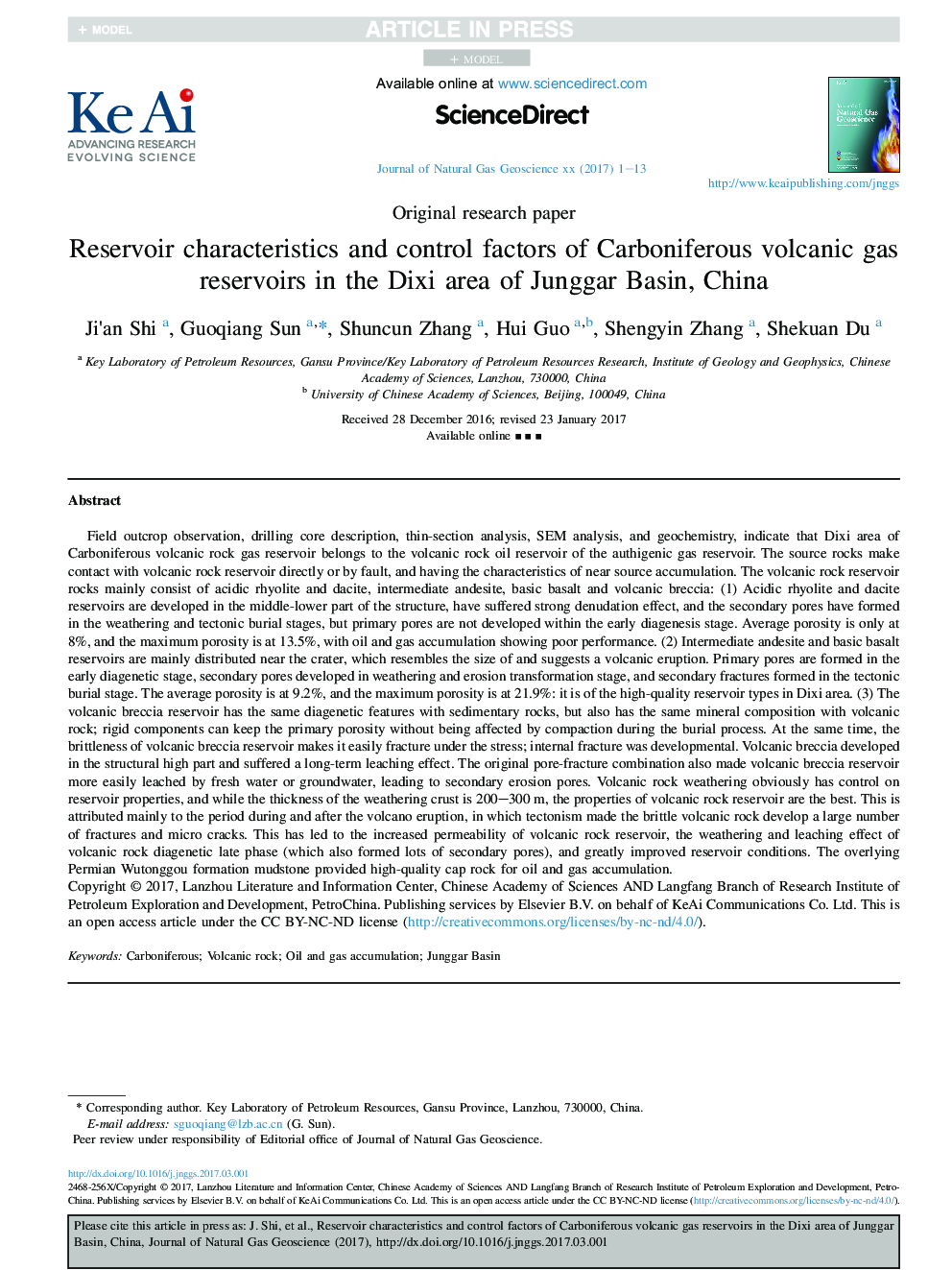| کد مقاله | کد نشریه | سال انتشار | مقاله انگلیسی | نسخه تمام متن |
|---|---|---|---|---|
| 8124226 | 1522744 | 2017 | 13 صفحه PDF | دانلود رایگان |
عنوان انگلیسی مقاله ISI
Reservoir characteristics and control factors of Carboniferous volcanic gas reservoirs in the Dixi area of Junggar Basin, China
دانلود مقاله + سفارش ترجمه
دانلود مقاله ISI انگلیسی
رایگان برای ایرانیان
کلمات کلیدی
موضوعات مرتبط
مهندسی و علوم پایه
علوم زمین و سیارات
ژئوشیمی و پترولوژی
پیش نمایش صفحه اول مقاله

چکیده انگلیسی
Field outcrop observation, drilling core description, thin-section analysis, SEM analysis, and geochemistry, indicate that Dixi area of Carboniferous volcanic rock gas reservoir belongs to the volcanic rock oil reservoir of the authigenic gas reservoir. The source rocks make contact with volcanic rock reservoir directly or by fault, and having the characteristics of near source accumulation. The volcanic rock reservoir rocks mainly consist of acidic rhyolite and dacite, intermediate andesite, basic basalt and volcanic breccia: (1) Acidic rhyolite and dacite reservoirs are developed in the middle-lower part of the structure, have suffered strong denudation effect, and the secondary pores have formed in the weathering and tectonic burial stages, but primary pores are not developed within the early diagenesis stage. Average porosity is only at 8%, and the maximum porosity is at 13.5%, with oil and gas accumulation showing poor performance. (2) Intermediate andesite and basic basalt reservoirs are mainly distributed near the crater, which resembles the size of and suggests a volcanic eruption. Primary pores are formed in the early diagenetic stage, secondary pores developed in weathering and erosion transformation stage, and secondary fractures formed in the tectonic burial stage. The average porosity is at 9.2%, and the maximum porosity is at 21.9%: it is of the high-quality reservoir types in Dixi area. (3) The volcanic breccia reservoir has the same diagenetic features with sedimentary rocks, but also has the same mineral composition with volcanic rock; rigid components can keep the primary porosity without being affected by compaction during the burial process. At the same time, the brittleness of volcanic breccia reservoir makes it easily fracture under the stress; internal fracture was developmental. Volcanic breccia developed in the structural high part and suffered a long-term leaching effect. The original pore-fracture combination also made volcanic breccia reservoir more easily leached by fresh water or groundwater, leading to secondary erosion pores. Volcanic rock weathering obviously has control on reservoir properties, and while the thickness of the weathering crust is 200-300Â m, the properties of volcanic rock reservoir are the best. This is attributed mainly to the period during and after the volcano eruption, in which tectonism made the brittle volcanic rock develop a large number of fractures and micro cracks. This has led to the increased permeability of volcanic rock reservoir, the weathering and leaching effect of volcanic rock diagenetic late phase (which also formed lots of secondary pores), and greatly improved reservoir conditions. The overlying Permian Wutonggou formation mudstone provided high-quality cap rock for oil and gas accumulation.
ناشر
Database: Elsevier - ScienceDirect (ساینس دایرکت)
Journal: Journal of Natural Gas Geoscience - Volume 2, Issue 1, February 2017, Pages 43-55
Journal: Journal of Natural Gas Geoscience - Volume 2, Issue 1, February 2017, Pages 43-55
نویسندگان
Ji'an Shi, Guoqiang Sun, Shuncun Zhang, Hui Guo, Shengyin Zhang, Shekuan Du,